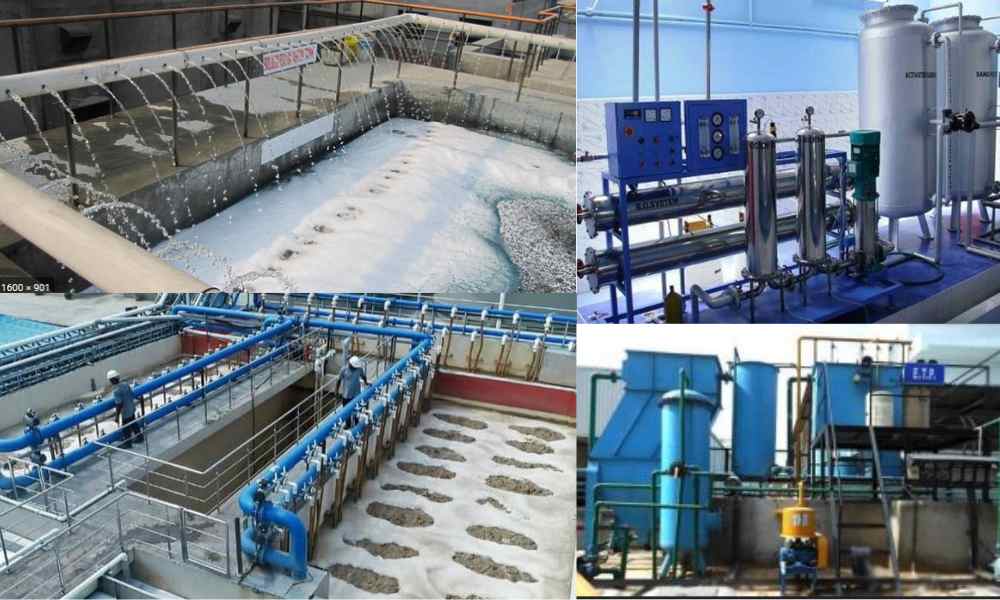Effluent Treatment Plants: A Lifeline for Bangladesh’s Rivers
Bangladesh, the “Land of Rivers,” is a nation where water forms the very lifeblood of its existence. From the majestic Padma to the sprawling Meghna, these waterways sustain agriculture, transportation, and the very fabric of Bangladeshi culture. But with increasing industrialization, a silent threat has begun to loom over these precious rivers – industrial wastewater.
This is where Effluent Treatment Plants (ETP) step in as guardians, playing a critical role in safeguarding Bangladesh’s water resources. ETP are marvels of modern engineering, designed to transform industrial wastewater, laden with pollutants, into a form that’s safe for discharge or even reuse.

Why ETPs are Crucial for Bangladesh
Imagine a textile factory spewing out dye-laden water, or a tannery releasing chromium-laced effluent. The consequences for Bangladesh’s environment would be catastrophic. Untreated industrial wastewater can:
- Poison aquatic life: Toxic chemicals can disrupt ecosystems, leading to fish kills and harming the delicate balance of aquatic life.
- Contaminate drinking water: Pollutants can seep into groundwater sources, rendering them unsafe for human consumption.
- Harm agricultural land: Irrigation with polluted water can damage soil fertility and reduce crop yields.
ETPs act as a shield against these threats. By removing contaminants and treating wastewater, they ensure that industries contribute to a sustainable future for Bangladesh.
A Multi-Stage Marvel
ETPs aren’t monolithic structures. They are a series of interconnected processes, each playing a specific role in the purification journey. Here’s a glimpse into the magic that happens within an ETP:
- Preliminary Treatment: This stage acts as a sieve, removing large solids like rags, debris, and sand through bar screens and grit chambers. It protects downstream equipment and prepares the wastewater for further treatment.
- Primary Treatment: Here, gravity takes center stage. The wastewater flows into settling tanks, where heavier solids sink to the bottom as sludge, while lighter materials like oil and grease float to the surface. This separation significantly reduces the pollutant load.
- Secondary Treatment: This is where the biological workhorses come in – bacteria! In aeration tanks, oxygen is pumped into the wastewater, creating a perfect environment for these beneficial microbes to thrive. They feast on organic pollutants, breaking them down into simpler, less harmful substances.
- Tertiary Treatment: Depending on the industry and desired level of treatment, a tertiary stage might be employed. This stage can involve processes like filtration, chemical addition, or disinfection to remove any remaining impurities and ensure the treated wastewater meets stringent environmental standards.
The Benefits of ETPs Extend Far Beyond Environmental Protection
While environmental protection is the primary function of ETPs, the benefits extend far beyond:
- Compliance with regulations: The Department of Environment (DoE) in Bangladesh has set strict regulations for industrial wastewater discharge. ETPs ensure that industries comply with these regulations, avoiding hefty fines and potential shutdowns.
- Resource recovery: ETPs not only treat wastewater, but they can also recover valuable resources. Treated wastewater can be reused in industrial processes, reducing freshwater consumption. Additionally, sludge generated during treatment can be processed to create fertilizer or even biofuel.
- Improved public health: By preventing water contamination, ETPs contribute to a healthier Bangladesh. Reduced exposure to pollutants in water leads to lower incidences of waterborne diseases, improving overall public health.
- A boost for sustainable development: The adoption of ETPs signifies a commitment to sustainable development principles. It demonstrates that industries are taking responsibility for their environmental impact and working towards a greener future for Bangladesh.
Challenges and the Road Ahead
Despite the undeniable benefits, implementing and maintaining ETPs come with challenges:
- High initial investment: Setting up an ETP can be a significant upfront cost for industries, especially for smaller players. Government incentives and financing schemes can play a crucial role in encouraging wider adoption.
- Operation and maintenance: ETPs require skilled personnel for operation and maintenance. Capacity building programs are essential to ensure the efficient functioning of these plants.
- Lack of awareness: While regulations exist, raising awareness about the importance of ETPs among both industries and the public is crucial. Educational campaigns and community engagement can bridge this gap.
A Shared Responsibility for a Sustainable Bangladesh
The journey towards clean water for Bangladesh requires a collective effort. Industries have a responsibility to invest in and operate ETPs effectively. The government can play a role by providing incentives, enforcing regulations, and promoting technological advancements.
